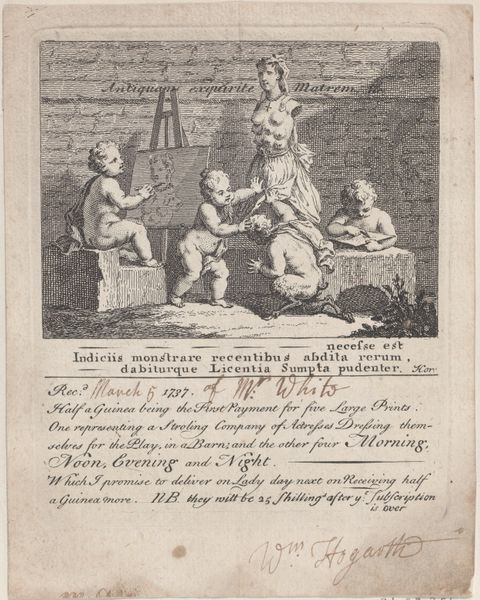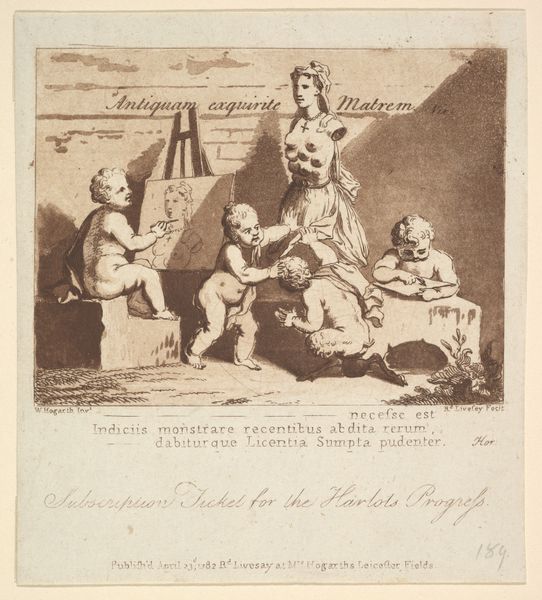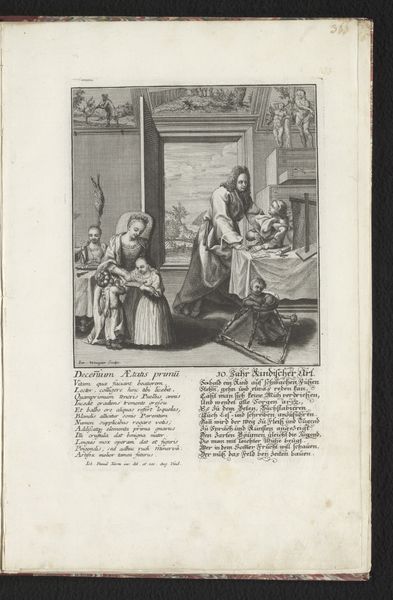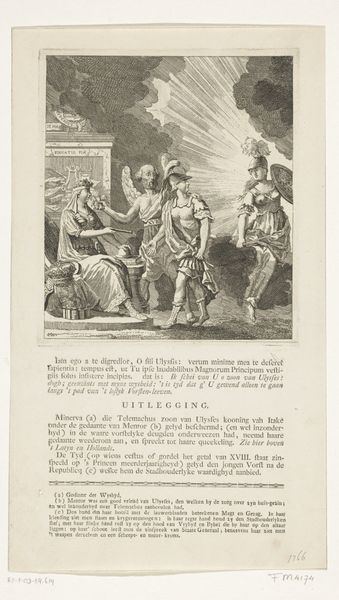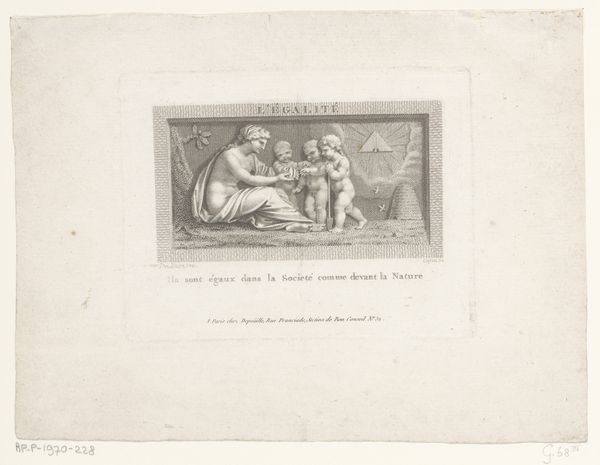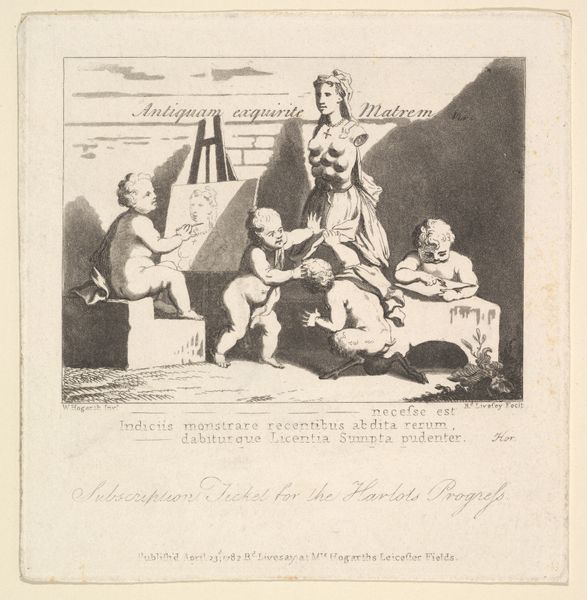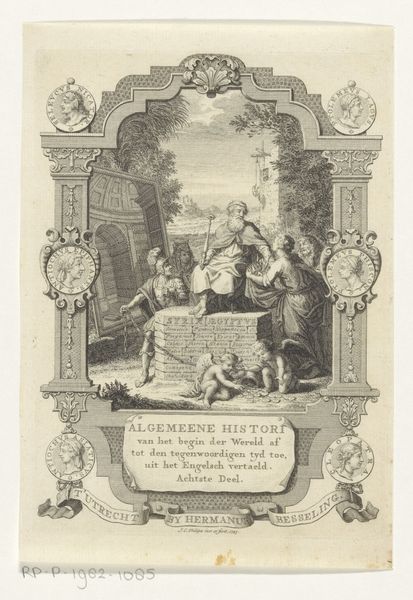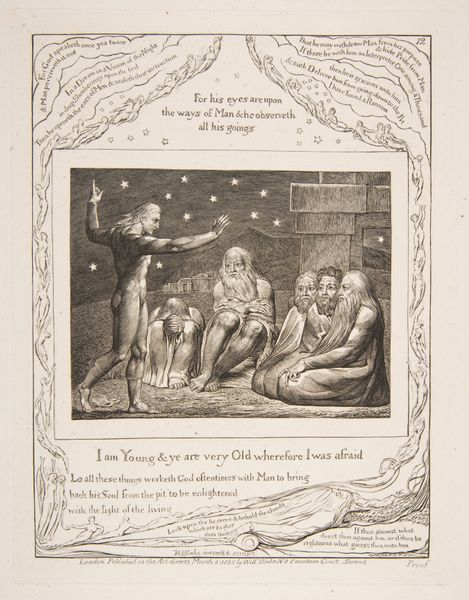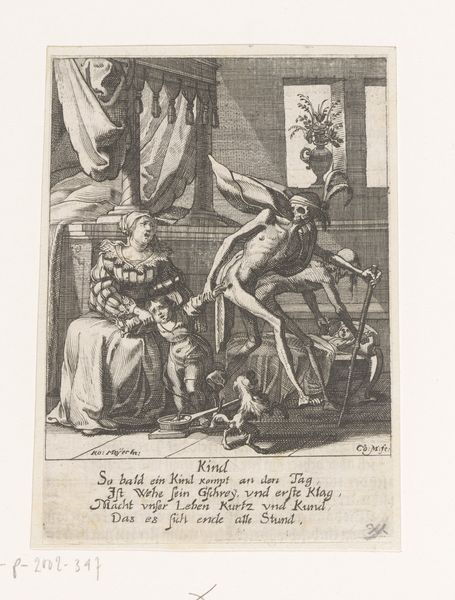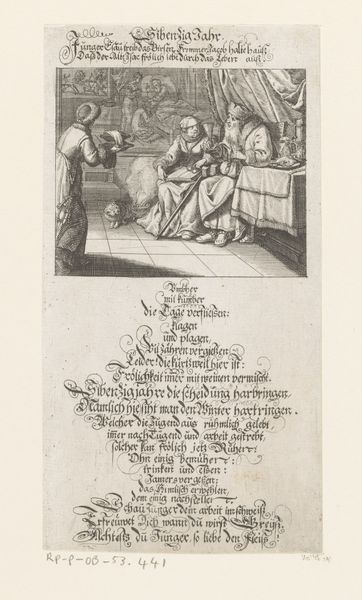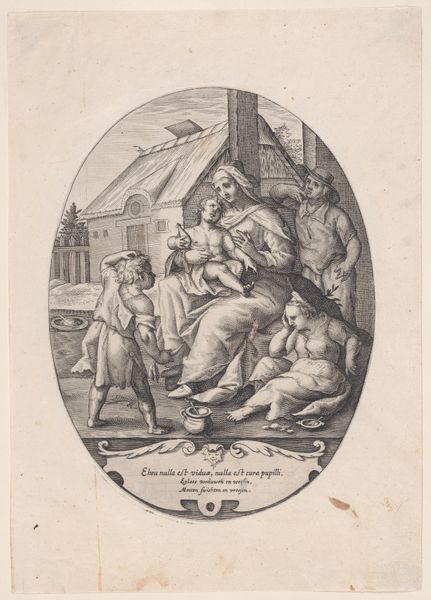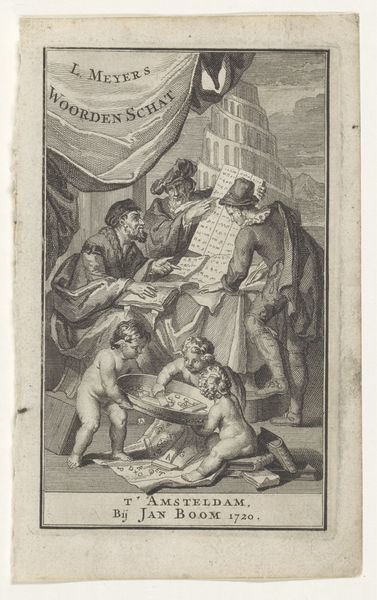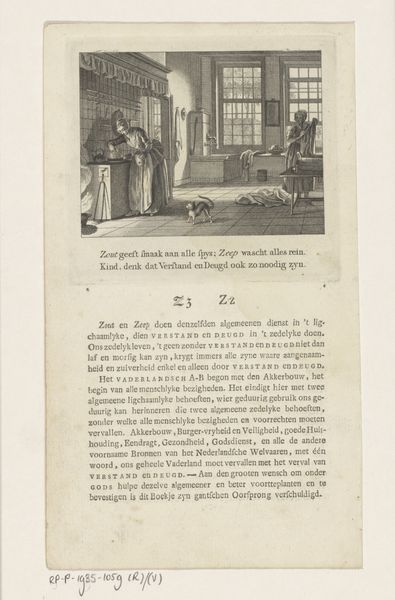
drawing, print, engraving
#
drawing
#
baroque
# print
#
figuration
#
engraving
Dimensions: Sheet: 6 3/4 × 5 1/2 in. (17.1 × 14 cm)
Copyright: Public Domain
Curator: William Hogarth's "Boys Peeping at Nature," created sometime between 1700 and 1800. The piece is an engraving, and we can see it on display at the Metropolitan Museum of Art in New York. Editor: Immediately, there’s a sense of playful imitation. The cherubic figures miming artistic creation... it’s humorous but also hints at something deeper about learning and artifice, don’t you think? Curator: Certainly, the piece prompts thoughts about the acquisition of artistic skill, about apprenticeship, and the ways that learning often involves mimicking established forms. The use of engraving allowed Hogarth to produce the piece affordably and for wider distribution. Editor: Yes, and note how these little apprentices engage with sculptures, a canvas, and drawing tools. It’s all arranged to underscore a staged performance of “art.” It is as if they, and Hogarth himself, are peeping at nature rather than truthfully interpreting. Do you agree that the setting, the little putti, and even the drawing of a classical female all reek of imitation rather than actual feeling? Curator: You’ve raised interesting observations. This all takes place against a roughly etched background. We should recall, the economics of printmaking allowed him independence. He sold these prints through subscription services. This connects art with the developing mercantile culture. Editor: Yes, absolutely, Hogarth, a shrewd fellow, cleverly acknowledges patronage, subscription, and perhaps pokes gentle fun at the artistic process itself? The text etched beneath, regarding payments for “two large prints,” is an intriguing merging of commerce and artistic creation. Curator: This inscription is vital. The production of these types of artworks often relies on such systems of support. Patronage networks directly impacted the possibilities open to artists like Hogarth. He himself depended on the market forces driving early capitalism in the visual art space. Editor: What I appreciate is how Hogarth uses playful images and biting textual commentary in a single print to cleverly ask if making and patronage aren't some form of peeping themselves. Thanks for untangling some of its many facets, materiality, process, patronage. Curator: My pleasure; Hogarth's works reveal production within the social fabric that sustains artistic endeavor. It serves as a material artifact that speaks to socioeconomic conditions prevalent during his life and work.
Comments
No comments
Be the first to comment and join the conversation on the ultimate creative platform.
